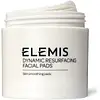What's inside
What's inside
 Key Ingredients
Key Ingredients

 Benefits
Benefits

 Concerns
Concerns

 Ingredients Side-by-side
Ingredients Side-by-side

Water
Skin ConditioningButylene Glycol
HumectantLactococcus Ferment Lysate
Skin ConditioningPolysorbate 20
EmulsifyingMethyl Gluceth-20
HumectantLactic Acid
BufferingPhenoxyethanol
PreservativeBetaine
HumectantPropylene Glycol
HumectantDisodium EDTA
Benzoic Acid
MaskingSodium Hydroxide
BufferingParfum
MaskingDehydroacetic Acid
PreservativeTromethamine
BufferingEthylhexylglycerin
Skin ConditioningPapain
Skin ConditioningSaponins
CleansingSodium Benzoate
MaskingSodium Chloride
MaskingGlycerin
HumectantBehenyl Alcohol
EmollientButyrospermum Parkii Butter
Skin ConditioningHydrogenated Castor Oil
EmollientStearyl Alcohol
EmollientPoria Cocos Extract
Skin ConditioningProtease
ExfoliatingSaponaria Officinalis Leaf/Root Extract
Skin ConditioningSubtilisin
Skin ConditioningTocopheryl Acetate
AntioxidantWater, Butylene Glycol, Lactococcus Ferment Lysate, Polysorbate 20, Methyl Gluceth-20, Lactic Acid, Phenoxyethanol, Betaine, Propylene Glycol, Disodium EDTA, Benzoic Acid, Sodium Hydroxide, Parfum, Dehydroacetic Acid, Tromethamine, Ethylhexylglycerin, Papain, Saponins, Sodium Benzoate, Sodium Chloride, Glycerin, Behenyl Alcohol, Butyrospermum Parkii Butter, Hydrogenated Castor Oil, Stearyl Alcohol, Poria Cocos Extract, Protease, Saponaria Officinalis Leaf/Root Extract, Subtilisin, Tocopheryl Acetate
 Reviews
Reviews

Ingredients Explained
These ingredients are found in both products.
Ingredients higher up in an ingredient list are typically present in a larger amount.
Glycerin is already naturally found in your skin. It helps moisturize and protect your skin.
A study from 2016 found glycerin to be more effective as a humectant than AHAs and hyaluronic acid.
As a humectant, it helps the skin stay hydrated by pulling moisture to your skin. The low molecular weight of glycerin allows it to pull moisture into the deeper layers of your skin.
Hydrated skin improves your skin barrier; Your skin barrier helps protect against irritants and bacteria.
Glycerin has also been found to have antimicrobial and antiviral properties. Due to these properties, glycerin is often used in wound and burn treatments.
In cosmetics, glycerin is usually derived from plants such as soybean or palm. However, it can also be sourced from animals, such as tallow or animal fat.
This ingredient is organic, colorless, odorless, and non-toxic.
Glycerin is the name for this ingredient in American English. British English uses Glycerol/Glycerine.
Learn more about GlycerinPhenoxyethanol is a preservative that has germicide, antimicrobial, and aromatic properties. Studies show that phenoxyethanol can prevent microbial growth. By itself, it has a scent that is similar to that of a rose.
It's often used in formulations along with Caprylyl Glycol to preserve the shelf life of products.
Water. It's the most common cosmetic ingredient of all. You'll usually see it at the top of ingredient lists, meaning that it makes up the largest part of the product.
So why is it so popular? Water most often acts as a solvent - this means that it helps dissolve other ingredients into the formulation.
You'll also recognize water as that liquid we all need to stay alive. If you see this, drink a glass of water. Stay hydrated!
Learn more about Water